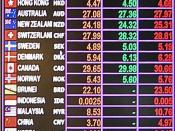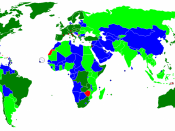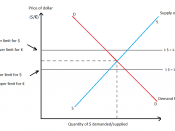The Initial Problem
When a firm sells to foreign customers, either the firm or its buyers are subject to the exchange rate risk inherent in such transactions. The sales/marketing side of the firm is primarily concerned with facilitating these transactions by doing everything in its power to make the buyer happy with its overall offering, while the treasury/finance side of the firm is primarily concerned with minimizing the financial risk inherent in such transactions. As managers of large global firms know, the natural tension that such sales create between the marketing and treasury functions of a firm can cause considerable dysfunction
The seller must make a choice about the currency in which it will invoice its customers. The natural tendency for a manager focusing on the financial implications of the transaction is to prefer that the invoicing be in the firm's domestic currency, thereby passing all of the transaction's exchange rate risk along to the buyer.
However, the sales/marketing-oriented managers in the selling firm want the potential buyer to be happy. They know that the buyer will be happier if the seller agrees to assume the exchange rate risk by invoicing the transaction in the buyer's domestic currency. The seller's marketing manager will claim that her firm's agreement to absorb this risk is a "market friendly" gesture. The seller's finance department will likely have little concern about this risk if it is short-term in nature, since short-term exchange rate risks can be addressed in three short steps.
Financially-Based Solutions
Step 1: Identify the Exposure
A financially sophisticated seller will likely use one of three major types of risk management products to hedge currency exposures, depending on the size and frequency of the foreign exchange transactions. These risk management practices include forwards, options, and swaps. Before entering into any particular type...


